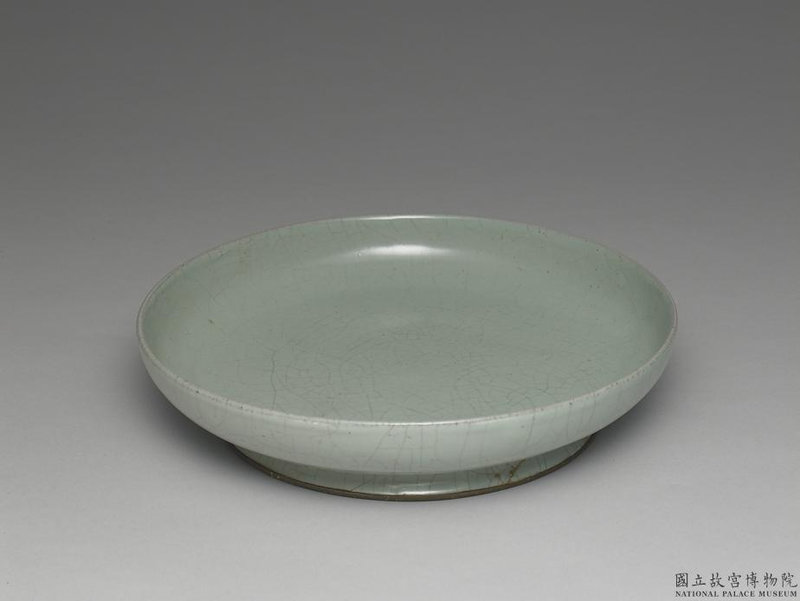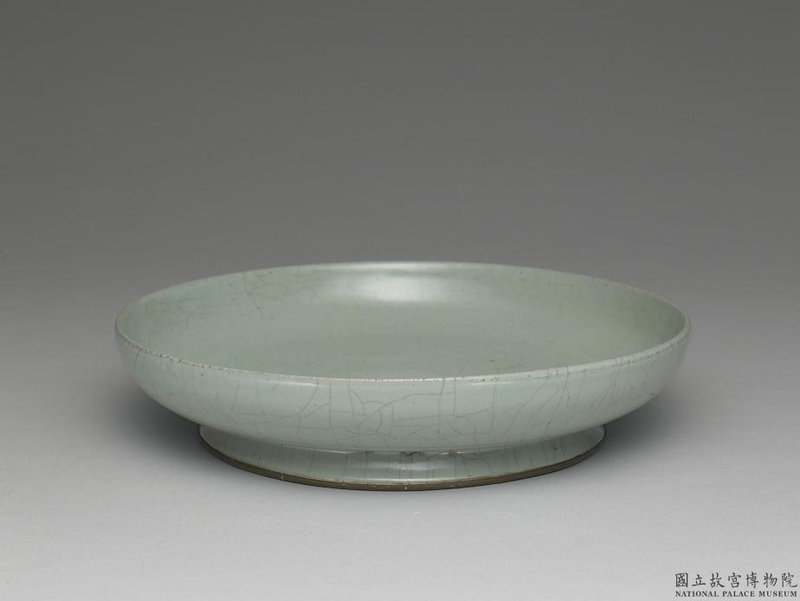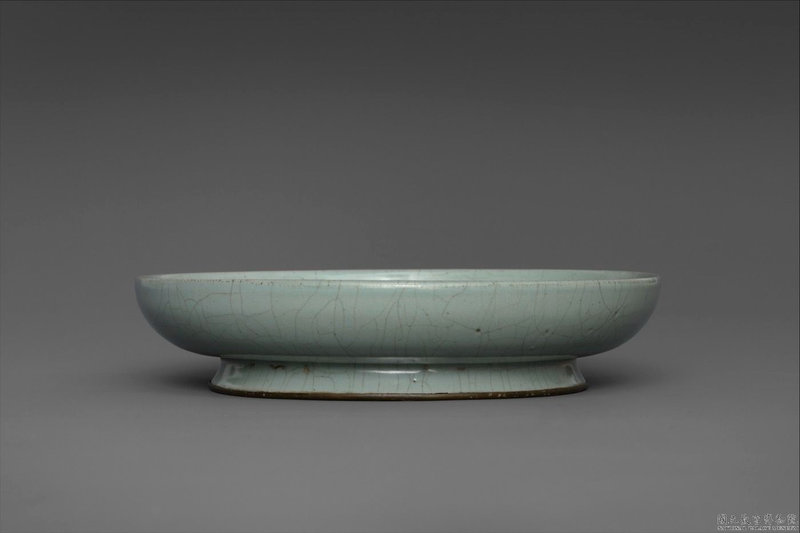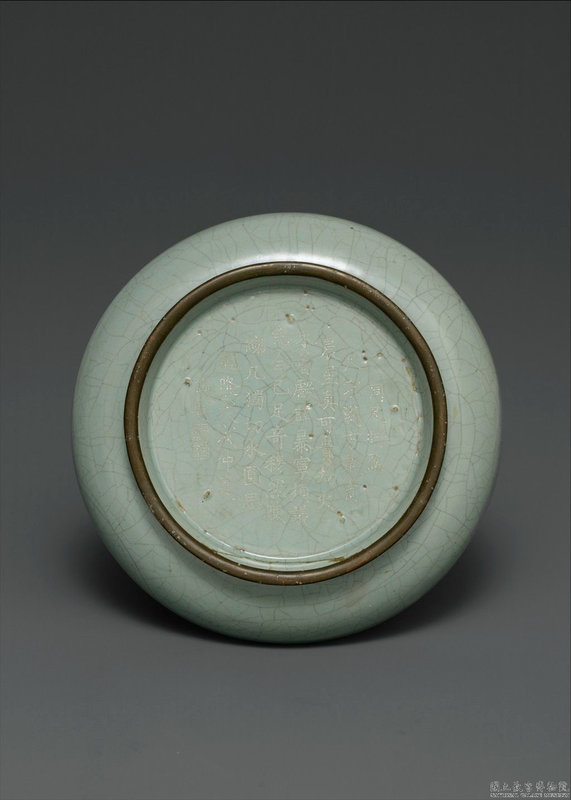Dish in celadon glaze, Ru ware, Northern Song dynasty, late 11th-early12th century
Dish in celadon glaze, Ru ware, Northern Song dynasty, late 11th-early12th century. Base inscribed Emperor Qianlong's "Ode to the Official Kiln Plate". Height 4.6 cm, diameter 21.5 cm, foot diameter 15.7 cm. ![]() National Palace Museum, Taipei.
National Palace Museum, Taipei.
It has a rounded mouth, shallow arc-shaped walls, flat bottom, slightly rolled-out feet, and copper buckles inlaid on the edges of the feet. The whole body is fully glazed, with a slight pink sheen in the thin parts of the glaze. There are ice cracks where the glaze accumulates on the bottom edge of the inner wall. There are five burn marks on the bottom circumference, and the earth-colored tire can be seen from the mark.
Emperor Qianlong's "Ode to the Official Kiln Plate" is engraved on the face: "The rulers of the Zhou Dynasty will be full of rulers, and the porcelain of the Song Dynasty will be porcelain. The morning star is so precious, and the calamity fire has not lost. It is completely surprising that Xue is violent and peaceful." "Cut the water and think about it" imperial poem. At the end of the poem, there is a chronological inscription "Emperor Qianlong's Wuxu Midsummer Imperial Title" (the forty-third year of Qianlong's reign: 1778), and two seals "Knowing Heart Not Far Away" and "De Chong Fu". When Emperor Qianlong was appreciating this work, he noticed that the glaze color of this work was not pure, but because he had the concept of valuing the ancient, he specifically stated in the poem's note: "Things that are small are valuable. Although old porcelain has a slight glaze, It is also considered as a rare item. If it is new porcelain, it is considered to be a piece of junk." It can be seen from this that compared with the stipulation issued by Emperor Qianlong in the seventh year of Qianlong's reign (1742) that scrap porcelain must be sold locally and not sent to Beijing, antique porcelain was indeed deeply loved by Emperor Qianlong. (Google traduction)

/https%3A%2F%2Fprofilepics.canalblog.com%2Fprofilepics%2F1%2F0%2F100183.jpg)
/https%3A%2F%2Fstorage.canalblog.com%2F03%2F02%2F119589%2F96711876_o.jpg)
/https%3A%2F%2Fstorage.canalblog.com%2F11%2F31%2F119589%2F94773502_o.jpg)
/https%3A%2F%2Fstorage.canalblog.com%2F20%2F83%2F119589%2F94772815_o.jpg)
/https%3A%2F%2Fstorage.canalblog.com%2F26%2F72%2F119589%2F75604929_o.jpg)
/https%3A%2F%2Fstorage.canalblog.com%2F59%2F60%2F119589%2F26458628_o.jpg)













/http%3A%2F%2Fstorage.canalblog.com%2F63%2F90%2F119589%2F129042528_o.png)
/http%3A%2F%2Fstorage.canalblog.com%2F28%2F46%2F119589%2F128715587_o.jpg)
/http%3A%2F%2Fstorage.canalblog.com%2F21%2F69%2F119589%2F128475813_o.jpg)
/http%3A%2F%2Fstorage.canalblog.com%2F19%2F09%2F119589%2F126883420_o.jpg)